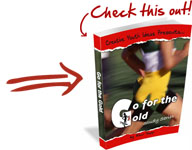Use a traditional Jewish Passover Meal – Seder to introduce youth to Easter.
Preparation
Set a low table with a white cloth, beautiful dishes, and accessories to demonstrate this meal. Furnish low tables, pillows, or rugs, on which the youth and leaders can recline during the observance. Include A large platter—the ke’arah; three matzot—or matzah— the unleavened bread that is to be in three loaves placed in a special cloth of three parts or a napkin folded over twice; goblets for use with grape juice; and a symbolic cup for Elijah. Arrange platter with:
- Betzah: roasted egg (or hard boiled in salt water), symbolic of the festival offering, Haggigah
- Zeroa: roasted meat with a bone, symbolic of the paschal or Passover lamb offered on the night of Passover.
- Maror: bitter herb, usually horseradish, symbolic of bitter slavery in Egypt
- Karpas: green vegetable, usually parsley or celery, symbolic of springtime with its hope and renewal.
- Haroset: a mixture of apples (at least 1/2 an apple per person), peeled and chopped fine or grated; chopped walnuts, almonds, or pecans; with chopped or mashed raisins, dates, prunes, or apricots. Cinnamon can also be used—symbolic of the mortar used by the children of Israel in Egypt.
- Salt water: for dipping the greens.
These items can be arranged in various ways, but tradition has the betzah, maror, and zeroa placed from left to right in one row, and the karpas, salt water, and haroset in the second row.
Give youth copies of the Seder (Order) to be aware of each step in the process and to read responsively the sections for the “group.” Previously decide on hymns to sing as a part of the closing. The meal is led by a person dressed in a white robe. This is known as a “kittel.” White is symbolic of joy and worn on festive occasions. Those partaking of the meal recline at the table as a sign of freedom. That is how free men in ancient times ate.
Begin the Seder with the Kaddesh (or Kadesh) a prayer with wine to sanctify the day of festival:
TRADITIONAL SEDER – (SIMPLE FORM)
LEADER: Now in the presence of loved ones and friends, before us the emblems of festive rejoicing, we gather for our sacred celebration. With the household of Israel, our elders and young ones, linking, and bonding the past with the future, we heed once again the divine call to service. Living our story that is told for all peoples, whose shining conclusion is yet to unfold, we gather to observe the Passover, as it is written:
GROUP: You shall keep the Feast of Unleavened Bread, for on this very day I brought your hosts out of Egypt. You shall observe this day throughout the generations as a practice for all times (Ex. 12:17).
LEADER: We assemble in fulfillment of the mitzvah.
GROUP: Remember the day on which you went forth from Egypt from the house of bondage, and how God freed you with a mighty hand (Ex. 13:3).
LEADER: The leader takes a cup of “wine” and chants the Kiddush:
We take up the Kiddush cup and proclaim the holiness of this Day of Deliverance! It was evening and morning, a sixth day, when the heaven and the earth were finished and all their array. And on the seventh day God finished all the work of creation. And God made cessation on the seventh day from all the work which God had done. And God blessed the seventh day and made it holy. for upon it. God made cessation from all the work of creating.
ALL: Next, all wash their hands by dipping their fingers in the bowls of salt water. Then they partake of the karpas by dipping the green vegetable in salt water, and the blessing for the vegetables is said. This part is used to interest the children. It can be explained as the vegetable representing the joyous festival of spring while the salt water reminds of the tears shed by the Israelites in slavery.
LEADER: The leader recites the “Karpas,” for rebirth and renewal.
Arise my beloved my fair one,
And come away;
For lo, the winter is past.
Flowers appear on the earth,
The time of singing is here.
The song of the dove
Is heard in our land. (Song of Songs 2: 10-12)
Let us go down to the vineyards
To see if the vines have budded.
There will I give you my love. (Song of Songs 7:13)
GROUP: Praised are You, Adonai, Sovereign of Existence, Who creates the fruit of the earth (eat the greens)
LEADER: After the dipping of the greens, the middle loaf of unleavended bread is divided into two parts. If you remember, there are three pieces of unleavened bread. The middle piece is the one broken into two parts. The larger part, the afikoman, is wrapped in a napkin, and hidden under the pillow where the leader reclines. This is to keep the interest of the children throughout the meal. At one point the children try to discover the hiding place, and prizes are awarded to all who participated, with a special prize for the child who finds the bread. That child actually keeps the bread until it is “redeemed” with a gift. At the end of the meal, everyone is given a piece of the afikoman. The smaller piece of bread is returned to its place. As the bread is being broken, the leader begins the “Yahaz,” as a symbol of the bond formed by sharing.
Now I break the middle rnatzah and conceal one half as the afikoman. Later we will share it, as in days of old the Passover offering itself was shared at this service in Jerusalem. Among people everywhere, sharing of bread forms a bond of fellowship. For the sake of our redemption? we say together the ancient words which join us with our own people and with all who are in need, with the wrongly imprisoned and the beggar in the street. For our redemption is bound up with the deliverance from bondage of people everywhere.
GROUP: This is the bread of affliction, the poor bread, which our ancestors ate in the land of Egypt. Let all who are hungry come and eat. Let all who are in want share the hope of Passover. As we celebrate here, we join with our people everywhere. This year we celebrate here. Next year in the land of Israel. Now we are all still in bonds. Next year may all be free.
CHILD: The “Maggid” is the Passover story. It includes 4 questions asked by the youngest child.
- Why is this night different from all the other nights?
- On all other nights we eat either leavened bread or matzah; on this night—only matzah.
- On all other nights we eat all kinds of herbs; on this night, we especially eat bitter herbs.
- On all other nights, we eat in an ordinary manner; tonight we dine with special ceremony.
ALL: This is followed by the washing of hands, “Rehatz,” and a blessing, “Motzi,” said by all over the bread.
We praise Thee, O God, Sovereign of Existence, Who brings forth bread from the earth.
ALL: The participants eat that portion of bread. Next, the “Matzah” is said as the next portion is broken, and a bit of horseradish placed on it before eating.
We praise Thee, O God, Sovereign of Existence, Who hallows our lives with commandments, Who has commanded us regarding the eating of matzah.
ALL: Following that, the bitter herb is dipped into “haroset” and “Maror” is recited.
We praise Thee, O God, Sovereign of Existence, Who hallows our lives through commandments, Who has commanded us regarding the eating of maror.
LEADER: Finally, horseradish is placed on a piece of the third piece of matzah, and made into a small sandwich to satisfy the Scripture “they shall . . . eat it with unleavened bread and bitter herbs” (Num. 9: 11). “Korek, or Koreh” is recited.
Preserving a bond with the observance of our ancestors, we follow a practice of Hillel, from the time when the Temple stood. He combined the matzah and maror and ate them together, so that he might observe the precept handed down to him, exactly as his father before him: “They shall eat the paschal lamb with matzah and maror together.” (Num. 9:11 )
GROUP: Together they shall be: the matzah of freedom, the maror of slavery. For in the time of freedom, there is knowledge of servitude. And in the time of bondage, the hope of redemption.
GROUP: The actual meal is started with hard-boiled eggs in salt water, again symbolic of tears and mourning. Other items for the meal are included in the list at the beginning of these instructions. At the conclusion of the meal the child shares the afikoman. “Barekh” or “grace after meals” is said.
May the One Who blessed Abraham. Isaac, and Jacob,
May the One Who blessed our Mothers,
bless this house, this table, and all assembled here;
and so may all our loved ones share our blessing.
LEADER: May the One Who brings harmony into the spheres on high bring peace to earth for all humanity.
GROUP: God will give strength unto our people. God will bless all people with peace.
The “wine” cup is used again. At that time, a child opens the door “for Elijah,” for Elijah is supposed to visit sometime during the meal and take the cup set aside for him. His coming is a symbol of eternal hope, freedom, and salvation. The opening of the door also symbolizes the coming of the Messiah with God’s deliverance. After that “Hallels” are read from Psalm 115—118 and “The Great Hallel,” Psalm 136. These Psalms are used to praise God for His mercy.
Prior to the “Nirtzah or conclusion of the service, the “wine” is drunk again. A closing poem is chanted with the hope expressed that “next year the children of Israel will be in Jerusalem.” Hymns are used to close the celebration.
(Readings from A Passover Haggadah. Herbert Bronstein, ed. New York: Central Conference of American Rabbis, 1974. )

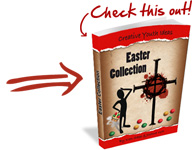 Easter Collection
Easter Collection
Games and Activities in celebration of Easter.
Get more than 80 creative ideas for planning a Youth Easter celebration or Easter Party. You can immediately download my best Easter Icebreakers, games, illustrations, Easter activity ideas AND MUCH MORE in a useful ebook!
=> Tell me more about the Easter Collection

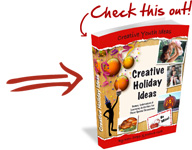 Holiday Collection
Holiday Collection
 Materials
Materials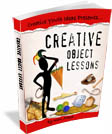


 Materials
Materials Materials
Materials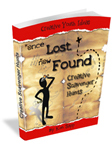
 Materials
Materials
 Materials
Materials Materials
Materials Materials
Materials Materials
Materials Materials
Materials


 Materials
Materials
 Materials
Materials Detective
Detective Materials
Materials

 Materials
Materials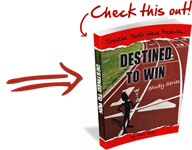
 Materials
Materials Materials
Materials Materials
Materials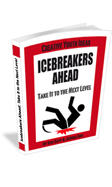
 Materials
Materials

